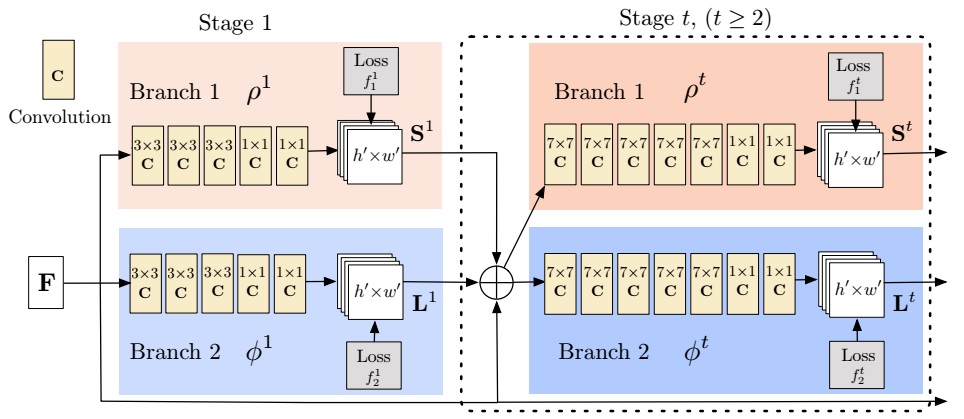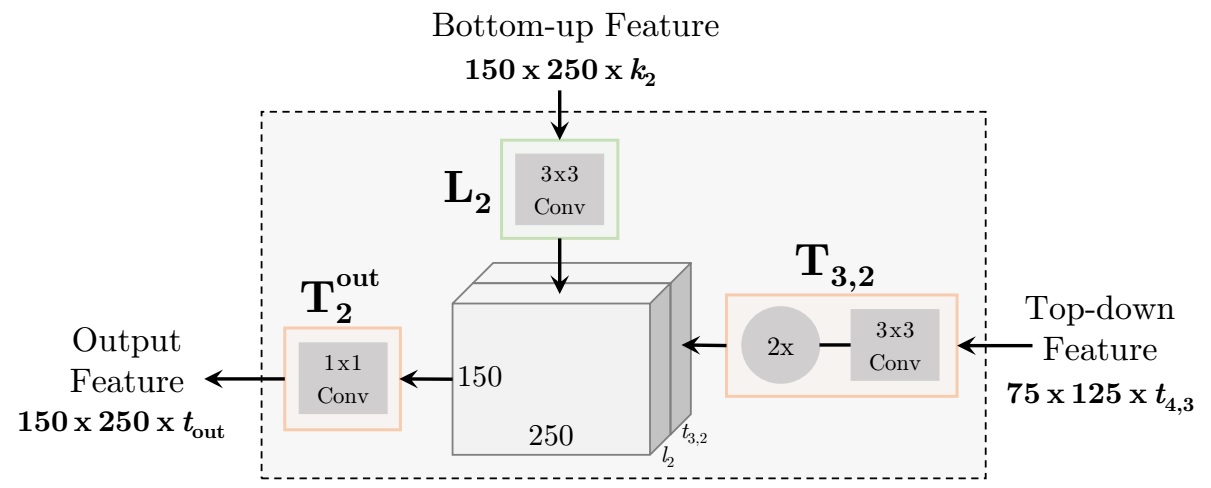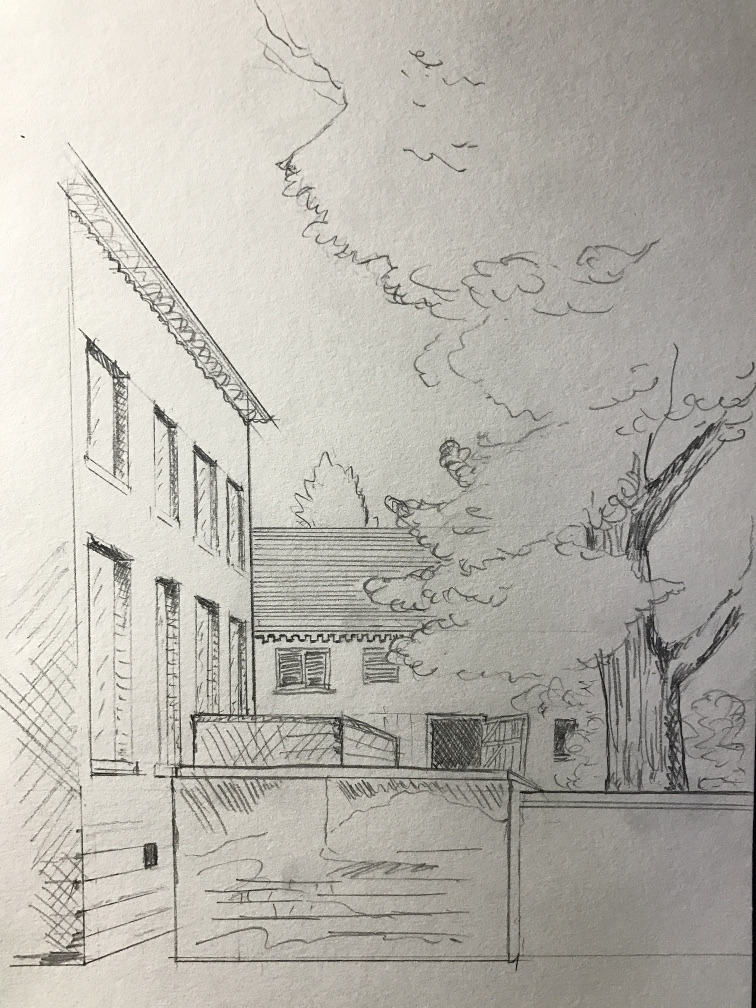生活里有好多大山要翻啊!

生活里有好多大山要翻啊!

TITLE: YOLO9000: Better, Faster, Stronger
AUTHOR: Joseph Redmon, Ali Farhadi
ASSOCIATION: University of Washington, Allen Institute for AI
FROM: arXiv:1612.08242
The authors summarize the work as a better, faster and Stronger version of YOLO.
Batch Normalization
Batch Normalization is used in this work. The authors claim that it helps YOLO get more than 2% improvement in mAP. Even though, I doubt BN would help or it might even worsen the performance in real world applications because of my own experience using BN.
High Resolution Classifier
Instead finetuned on 224224 images, the classification network is finetuned on 448448 images, which helps the network perform better on higher resolution. This high resolution classification network gives an increase of almost 4% mAP.
Convolutional With Anchor Boxes
In YOLOv2, anchor boxes and FCN manner are also adopted. This enbles the YOLO generate much more boxes, which improves recall from 81% (69.5 mAP) to 88% (69.2 mAP).
Dimension Clusters
Prior works usally define the anchor boxes by hand, for example 1:1, 1:2(2:1) or 1:3(3:1) in SSD. In this work, the anchor boxes are defined by clustering. K-means clustering is used and the distance metric is defined based on IOU, which eliminates the effect caused by the actual size of boxes: larger boxes generate more error than smaller boxes using Euclidean distance.
Direct Location Prediction
Instead of predicting offsets to the center of the bounding box, YOLO9000 predicts location coordinates relative to the location of the grid cell, which bounds the ground truth to fall between 0 and 1. Then constrained location prediction is easier to learn.
Fine-Grained Features
In order to ultize finer grained features for localizing smaller objects, the authors add a passthrough layer that brings features from an earlier layer.
This is similar what has been done in ResNet.
Multi-Scale Training
Data of different resolutions are used to train the network. This regime forces the network to learn to predict well across a variety of input dimensions. This means the same network can predict detections at different resolutions.
Hierarchical Classification
A hierarchical prediction is built. Several nodes are added to build a tree. At each node, a semantic category is defined at a level. Thus images of different objects may be combined as one label because they belong to one higher level semantic label.
Joint Classification and Detection
Two datasets are used to train the large scale detetor. One is a traditional classification dataset, which contains a large number of categories. The other one is a detection dataset. When a detection image is seen, backpropagate loss as normal. For classification loss, only backpropagate loss at or above the corresponding level of the label.
日式治愈系电影《阪急电车》,每个与你擦肩而过的人都可能给你的生活带来变化,但是如果我们早已不关心身边的人了,那我们又如何从彼此之间获取能力呢。

小葵与高良健吾主演的漫改电影《手拉你》,每一个梦想都会败给现实,没有败给现实的梦想只存在于电影之中,甚至电影中的梦想也会败给现实。

想看《熔炉》很久了,一直没看,趁着元旦假期终于看了,当时看完有点后悔,因为实在太压抑,弄得我整个假期情绪都不好。
估计很多观众对《熔炉》的主角孔侑和郑裕美的关注是从《釜山行》开始的,相比较与《釜山行》,《熔炉》的质量可是高了很多,《熔炉》是根据韩国作家孔枝泳同名小说改编的剧情电影,根据真实事件改编,影片和小说的事实依据来源与2000年至2004年间发生于光州一所聋哑障碍人学校中的性暴力事件,
电影《熔炉》暴露出的社会福祉机构内存在着的侵害残障人人权的问题,也引发了韩国民众对残障人群体的集中关注效应。韩残障人团体等民间组织一致呼吁应对《社会福祉事业法》进行修订。
2011年12月29日,韩国国会通过了《社会福祉法事业法修订案》。修订后的社会福祉法规定,对触犯《性暴力特别法》和《儿童青少年性保护法》规定的犯罪行为,十年内不得从事相关业务,在职期间对使用社会福祉设施的人员实施同类犯罪的,将永远禁止从事社会福祉事业的经营管理业务。《社会福祉事业修订案》还规定了经营管理人员停止执行职务,强化国家和自法团体的指导和监督力度,提高社会福祉经营管理机构公益性和透明性等措施。
电影中暴露出的光州仁和学校虐待和性侵害学生事件,也引发人们对学生人权和性侵犯问题的关注。韩政府为预防“熔炉”事件的再次发生,积极推动国会通过《教育公务员法修订案》。修订案规定对实施性犯罪的老师将处以100万韩元以上的罚金并予以清退。
2011年10月起,韩国教育科学技术部对全国所有寄宿型特殊教育学校和普通特殊教育学校实施联合检查,并成立预防对残障学生实施性侵犯的“常设监督团”。同时还将对幼儿园、学校等教育机关从业人员的性犯罪经历进行调查。
韩国各级教育机关对残障人学生性侵害现状进行调查,并加强性教育以防止再次发生类似事件。韩国京畿道、光州、首尔等城市也相继出台《学生人权保护条例》禁止间接体罚,禁止性别歧视等。
电影当中给我冲击最大的一幕是叫陈侑利的聋哑女孩的笑容,正当大家因为庭审不顺利、施暴者很可能逍遥法外而愁眉苦脸、毫无胃口可言,小女孩却依然胃口大开,吃得满脸都是炸酱面,那笑容让人看到了一种希望,也让人更加对他们的遭遇感到心痛,对施暴者更加痛恨,这一幕真的让人百感交集。

春饼是北京吃食中最好吃的一种,我们全家一直都这么认为,吃起来简直没有够,年年做,年年吃,年年夸。
春饼的妙处在于它的综合效应
春饼表面上是混合物,八样东西,放在薄饼里,一裹,吃起来居然味道全变,神了。
这是春饼的非凡之处。
——舒乙《春饼》
真的,春饼也是我的最爱。有些地方用蒸出来的饼,我家里吃一般都是烙饼,估计是烙饼放的油多一点,总觉得烙饼吃着更香。每次吃都得吃撑还不愿意停,好像一吃春饼饭量都得变大一倍。家里吃的话一般炒一盘豆芽、炒几个鸡蛋、切点黄瓜丝和萝卜丝、再手撕一根葱、切点熟食、拌一晚麻酱,各夹一筷子用饼一卷,三四口嚼完,那叫一个香。在外面吃馆子,我会特意回去吃的列表很短,有一家春饼店是其中之一,每次去都点一盘炒合菜、一盘京酱肉丝和酱牛肉,再加两屉饼,没过一段时间不去都犯馋。
TITLE: Realtime Multi-Person 2D Pose Estimation using Part Affinity Fields
AUTHOR: Zhe Cao, Tomas Simon, Shih-En Wei, Yaser Sheikh
ASSOCIATION: CMU
FROM: arXiv:1611.08050
This work is the successor of Convolutional Pose Machines. The network structure, which predict the part emergence heatmap and part aafinity field jointly, is illustrated in the following figure. We can compare it with previous work.

Similar with previous work, the network works as sequence learning scheme. One of the branch predicts confidence maps for part detection, while the other one predicts part affinity fields for part association.
At each location $ \mathbf{P} $, the value of the confidence $ S_{j}^{\ast}(\mathbf{P}) $ for a part type $ j $ is defined as
It means that for every type of part, a heatmap is predicted with multiple highlight areas, indicating the emergence of a part instance.
If we consider a single limb, let and be the position of body parts and from the limb class for a person on the image. is the length of the limb, and is the unit vector in the direction of the limb. The ideal part affinity vector field, , at an image point as
Similar to confidence maps for part detection, part affinity fields are also predicted for all persons
where is the number of non-zero vectos at point . The confidence score of each limb candidate is measured by
where and are two detected body parts.
The last problem is to select different limbs linked in PAFs to combine as one person’s skeleton. This is a classical generalized maximum clique problem. I think in additional to the method mentioned in this paper, many other optimiaztion algorithms can be tried. These algorithms are well discussed in multi-object tracking problem.
TITLE: Convolutional Pose Machines
AUTHOR: Shih-En Wei, Varun Ramakrishna, Takeo Kanade, Yaser Sheikh
ASSOCIATION: CMU
FROM: arXiv:1602.00134
The following figure shows the comparison of traditional Pose Machine and Convolutional Pose Machine

A pose machine consists of a sequence of multi-class predictors, $g{t}(\cdot)$, that are trained to predict the location of each part in each level of the hierarchy. In each $stage$ $t \in {1…T}$, the classifiers $g{t}$ predict beliefs for assigning a location to each part $Y_{p}=z, \forall z \in \mathbb{Z}$, where $\mathbb{Z}$ is the set of all locations in an image.
As illustrated in the figure (a) and (b), the image is first sent to $Stage$ $1$ and a belief map is predicted. Then the belief map and image features $x’$ are combined to sent to the following stage. As the procedure repeats, final result is predicted from the last $Stage$ $T$.
Convolutional Neural Network is naturally a sequence of stages if multiple losses and predictors are inserted at the intermediate layers. The (c) and (d) in the figure illustrated a convolutional pose machine. The sub-network in (c) plays the role of first stage. The shared network at the top-left corner in (d) is used to extract image features $x’$, which will be combined with the output of every $Stage$ $t-1$ and sent to $Stage$ $t$. In addition, the stacked convolutional layers’ perceptual field increases as deepening, which means that more contextual infomation is taken into consideration helping refine the output.
When training, every stage has its own loss function to predict parts. These losses work similar with the auxiliary classifiers in GoogleNet, which helps alleviate the problem caused by the vanishing of gradient. The network can be trained end-to-end. Compared with traditional pose machine, CMP is much easier to train. The visualization of the network can be found here
虽说我不是什么信徒,但是这圣诞节的气氛还是挺感染人的,今天加了一上午班总觉的怪凄惨的,再加上想解决的问题最终没有搞定,就更悲凉了。下午应景又看了《真爱至上》,也算抚慰一下受伤的心灵。这电影看了得有五六年了,每年都会翻出了再看看,虽然故事基本都背下来了,但是每次看依旧会有满满的幸福感。
这电影虽然是以圣诞节为主题,不过其中的感情应该是为各个族群所接受的普世价值吧,追求爱与被爱。除了这个,今年再看这部电影突然怀念起读硕士的日子,因为电影的开篇与结尾都是机场的场景,而我在硕士阶段做智能监控所用的数据就是机场的监控录像,其中需要检测的一种事件就是“拥抱”,当时看了很多这样的样本,当时会联想到《真爱至上》这部电影,还觉得做课题有点苦,但看这样的样本却还有点幸福。今年通过看电影开始怀念做实验了,大概是因为觉得还是年轻好。

TITLE: Beyond Skip Connections: Top-Down Modulation for Object Detection
AUTHOR: Abhinav Shrivastava, Rahul Sukthankar, Jitendra Malik, Abhinav Gupta
ASSOCIATION: CMU, UC Berkeley, Google Research
FROM: arXiv:1612.06851
In this paper top-down modulations is proposed as a way to incorporate fine details into the detection framework. The standard bottom-up, feedforward ConvNet is supplemented with a top-down modulation (TDM) network, connected using lateral connections. These connections are responsible for the modulation of lower layer filters, and the top-down network handles the selection and integration of features.
The idea of this work is very similar with the work of Feature Pyramid Networks for Object Detection. An example of Top-Down Modulation (TDM) Network is illustrated as the following figure

TDM is integrated with the bottom-up network with lateral connections. $C{i}$ are bottom-up, feedforward feature blocks, $L{i}$ are the lateral modules which transform low level features for the top-down contextual pathway. Finally, $T_{j,i}$, which represent flow of top-down information from index $j$ to $i$.
In this paper, the $T$ blocks are implemented using single convolutional layer (with non-linear activation) optionally with upsampling operation. The features from $C$ (processed by $L$) and $T$ are concated then sent to a convolutional layer for combination, as the following figure shows

At training stage, one new pair of lateral and top-down modules is added at a time and trained repeatedly from a pre-trained model.
